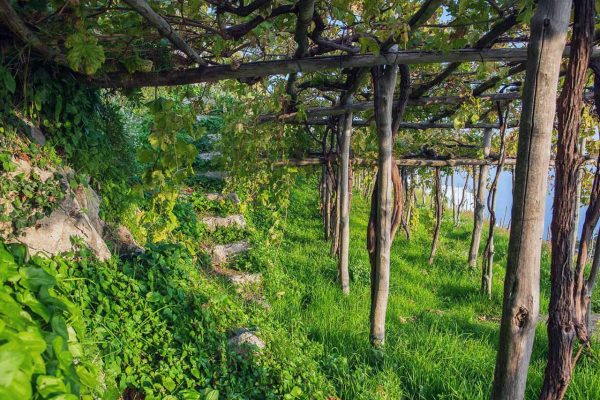During the Middle Ages, it was regarded as one of the most fascinating churches in the South. Commissioned by the noble D’Afflitto family, this sacred site offers a panoramic window onto the coastal landscape.
20 October 2022, by the Editorial Team of Authentic Amalfi Coast. Cover Photo by Laura Thayer. Repost 16 July 2024
It stands as one of the most exquisite spiritual sites in southern Italy. The Basilica of Sant’Eustachio majestically rises on Monte Aureo, near Pontone, the oldest settlement on the Amalfi Coast.
The D’Afflitto Family of Amalfi
Constructed in the 12th century at the behest of the noble D’Afflitto family, an ancient aristocratic lineage of Amalfi, it is reputed that the family descended directly from the Roman martyr Saint Eustachius, after whom the basilica is named. This site offers some of the most captivating vistas of the region.
From this vantage point, one’s gaze can sweep all the way to the city of Amalfi. Its history is intricately intertwined with one of the most prominent families of the Amalfi Coast. Members of this distinguished dynasty are purported to have been instrumental in the establishment of the Order of Malta, a religious knightly order. The D’Afflitto family is also referenced in Torquato Tasso’s Jerusalem Conquered.
The Culturalmente section is produced by Authentic Amalfi Coast of the Amalfi Coast Tourist District, funded by the Amalfi Coast Tourism Development Network. Directed by Matteo Giordano, it showcases through the insights and narratives of Bonaventura Esposito, the artistic, cultural, and natural splendours of the Divine Coast: those hidden gems and unread pages of the book of the Amalfi Coast.
The Structure of the Basilica of Sant’Eustachio
What remains today are the ruins of what once was a basilica of Romanesque tradition. The current structure still exhibits the distinctive characteristics of this architectural style, featuring three naves, an entrance portico, the transept, and three cylindrical apses.
The external decorations on the apses with ancient intertwined bichromes underscore influences from the Islamic, Spanish, and African worlds. The church encompasses a subterranean crypt and, like all southern churches, is oriented towards the east. Originally, the naves were separated by grand marble columns with classical capitals.
Strolling within its walls, one can still envision what this basilica represented to the inhabitants of Pontone.



